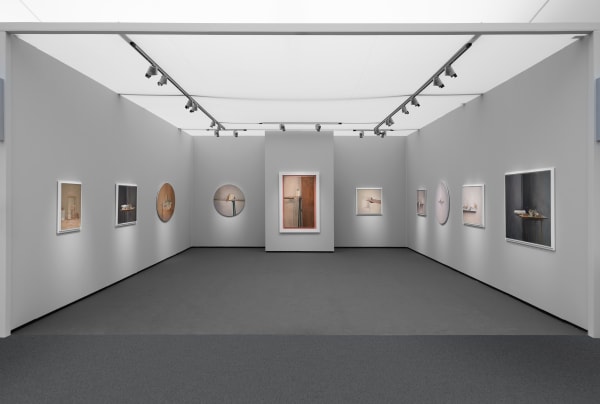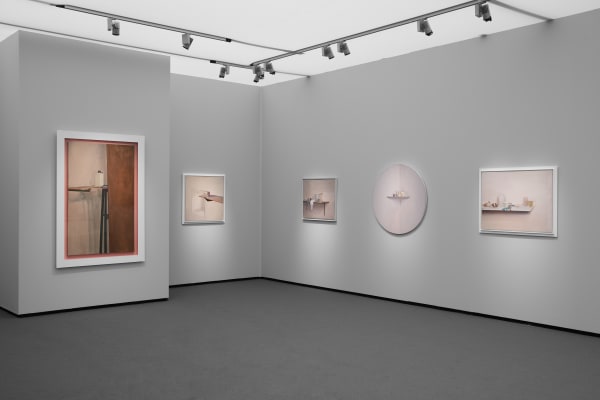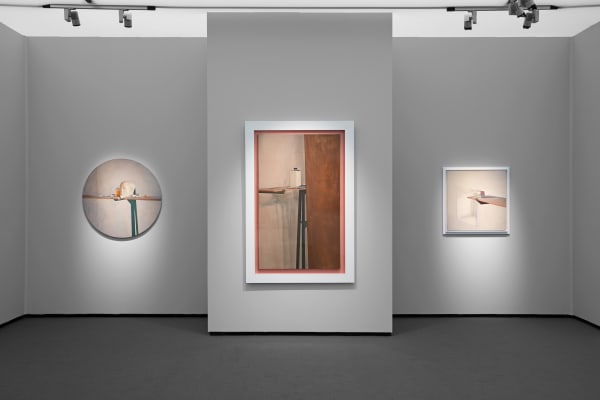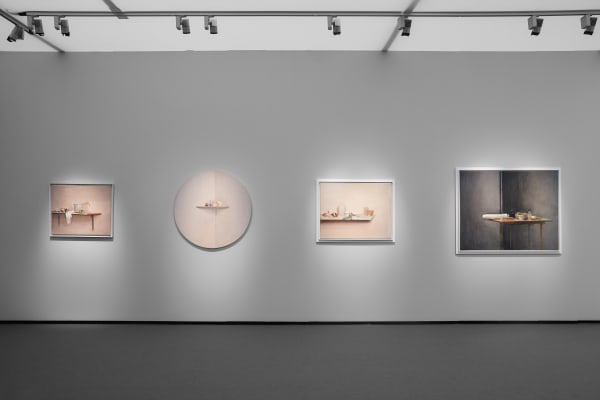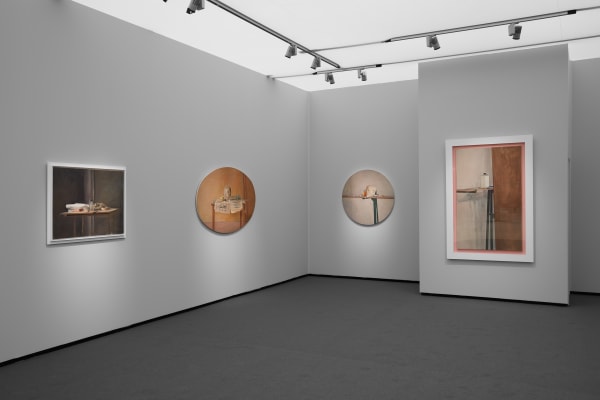David Nolan Gallery is pleased to announce the gallery’s presentation of paintings and drawings by Rodrigo Moynihan, Self Portraits and Still Lives 1973-1988, which will be on view at Frieze Masters from October 12-16. A catalogue with text by John Yau accompanies the presentation. Moynihan’s work has not been seen in London since 2002. His work appears in the collections of the Tate, London; Royal Academy of Arts Collection, London; National Portrait Gallery, London; Metropolitan Museum of Art, New York; and Hirshhorn Museum and Sculpture Garden, Washington D.C., amongst many others.
Rodrigo Moynihan was born in Tenerife, Spain in 1910. His childhood was spent in the Canary Islands and then New York where he got much of his early education before coming to London and the Slade school of Art. It was here that he met what would be his life-long friend William Coldstream who together with Ivon Hitchens started a pioneering movement in painting called Objective Abstraction. Their works were concerned with the medium itself, emphasizing painterly strokes, and were in their way a precursor of Abstract Expressionism that prompted the poet David Gascoyne at the time to describe them as an ‘explosion in a jam factory.’ Examples of these can be found at the Tate, the Hirshhorn Museum and other institutions around the world.
In 1938 Moynihan was associated with the Euston Road school which had been started by William Coldstream, Victor Pasmore, Claude Rogers and Graham Bell. Students included Stephen Spender, Adrian Stokes and Lawrence Gowing.
During the war, Moynihan served in the British Army before being recruited as an official war artist through the support of Kenneth Clark, Director of the National Gallery in London. A great deal of paintings produced in those years, including the well-known Medical Inspection, are in the collection of the Imperial War Museum in London. It was during this period that he was detailed to make many portraits of wartime military personal which led to several famous commissions including prime minister Clement Atlee (which hung at 10 Downing Street during the Blair administration) and the Queen as Princess of York now in the Kings collection.
In the late 1940’s Moynihan was appointed Professor of Painting at the Royal College of Art. He quickly made the college into the premier art school in the UK and it became the hub of the British art world. Leon Kossoff, Frank Auerbach, Peter Blake, Malcom Morley, and many others were pupils who studied under Moynihan. He lent Francis Bacon his studio where he had previously painted two vast works of art, The Teaching Staff of the Royal Painting School, Royal College of Art, now at the Tate Gallery, and After the Conference: The Editors of Penguin Books, Random House Collection.
But Moynihan was slowly shifting back to abstraction and this together with his distaste for the establishment, which he felt was parochial, he decided to resign his posts both at the college and as Royal Academician. From this point forward, he would oscillate between abstraction and figuration with a distinct fluidity as Gerhard Richter and others would later do. Around this time, he met the artist Anne Dunn and they moved to Paris where they became part of an art world that included Jean Helion, Giacometti James Bishop and others. It was here that they met John Ashbery, then a correspondent for the Herald Tribune, and together with Sonia Orwell, wife of George Orwell, they started the legendary magazine Art and Literature, 1963-1967. Throughout this period Moynihan was showing in Paris, London, and New York.
In the early 1970’s, Moynihan began making a series of still lifes composed of tools of a painter’s trade haphazardly strewn on tables and shelves. Of these works the artist said in an interview with David Sylvester: “It was especially important to me not to arrange the still life so as to form a pictorial grouping—a picture. I wanted the objects to be found… so that the dictionary words of describing an object disappear. I wanted to paint them because they looked like that—without my intervention—having arranged themselves like that in that particular light."
Alongside these works, Moynihan painted numerous self-portraits, recording himself reflected in a mirror. The gold edge of the mirror acts as both a framing device and a compositional element; it changes angle and migrates throughout each canvas. These self-portraits show a contemplative painter in his later years, inextricably bound to his medium and life’s work. They also connect him with Diego Velázquez, whose court paintings were filled with humanity and physicality, and who notably recorded his own presence in his masterpiece, Las Meninas. Rembrandt and his history of self-portraiture that examine the aging of the artist is an obvious influence in attitude as well and an insightful look into the soul of the artist.
Looking at Summer Interior, we see the painter at work, easel in hand before his canvas, staring outward into the mirror. Shirtless and nonchalant in the hot seasonal air, bathed in tonal yellow sunlight, his gaze appears unflinching as he depicts his own semblance. As the viewer’s eyes meet his, we briefly consider that we are the sitters, until the mirror grounds the composition and implies we are merely spectators happening upon a candid, private instance in the studio. There is a quiet confidence in Moynihan’s brushstroke, particularly in these mature paintings, that renders the canvases instinctual, where his personhood and profession are one and the same, defined by each other.
But perhaps what draws the contemporary viewer to Moynihan’s work is not its connection to disciplines of time past, rather how it reassesses the terms and principles of the medium, such as composition, subject, and light. Moynihan’s canvases lack pretension, favoring swift gesture over tireless reworking, suggesting that these objects and even himself, are only temporarily frozen, forever shifting, moving and eventually, ceasing to be. As the objects and Moynihan move in and out of frame, we’re forced to consider where they go. People age, paint tubes go empty, newspapers are discarded, nothing is untouched by the hands of time.
